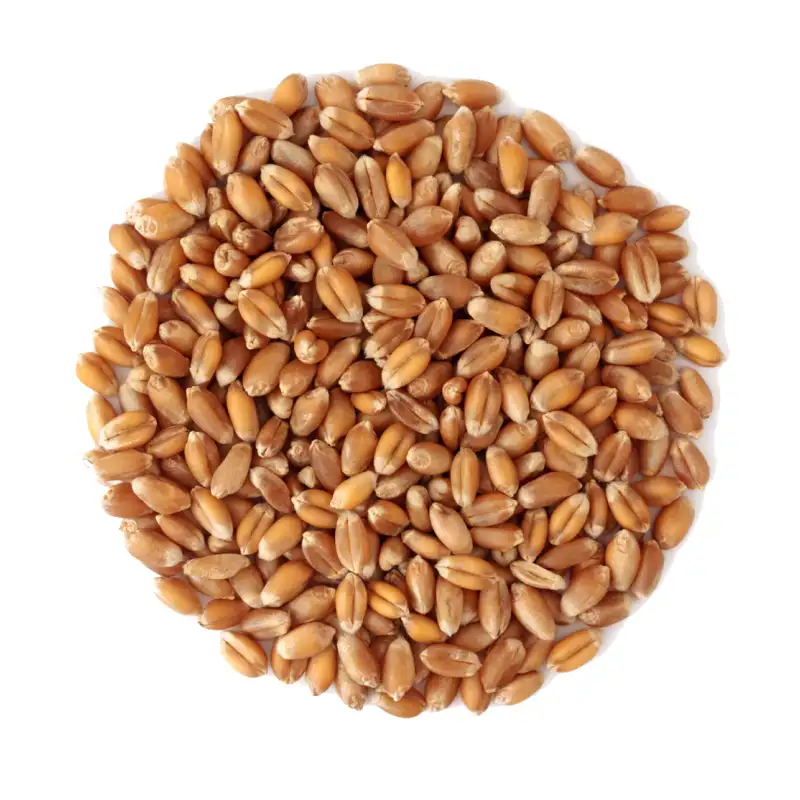
| Glycemic Index | Glycemic Load |
45
|
26.8
|
The glycemic index (GI) of whole grain wheat equals to 45, which classifies it as a low GI food. The glycemic load (GL) of whole grain wheat is equal to 26.8, which classifies it as a high GL food.
| Nutrition Facts | |
| Calories (kcal) | 305 |
| Carbohydrates (g) | 59.5 |
| Proteins (g) | 11.8 |
| Fats (g) | 2.2 |
100 grams of whole grain wheat contain 305 kcal (1276 kJ), 11.8 grams of proteins, 59.5 grams of carbohydrates, and 2.2 grams of fats.
Whole grain wheat is a type of wheat that contains all three parts of the grain: the bran, germ, and endosperm. This makes it a more nutritious option compared to refined wheat, which has had the bran and germ removed. Whole grain wheat is a rich source of fiber, vitamins, minerals, and other beneficial plant compounds that can improve overall health.
Nutrition Facts:
One cup (164 grams) of cooked whole grain wheat contains:
- Calories: 174
- Carbohydrates: 39 grams
- Fiber: 6 grams
- Protein: 6 grams
- Fat: 1 gram
- Iron: 15% of the daily value (DV)
- Magnesium: 21% of the DV
- Phosphorus: 20% of the DV
- Zinc: 14% of the DV
- Vitamin B6: 15% of the DV
- Folate: 11% of the DV
Health Benefits:
- Lower risk of heart disease: Whole grain wheat is associated with a lower risk of heart disease due to its high fiber content, which can lower cholesterol levels and improve blood sugar control.
- Improved digestion: The fiber in whole grain wheat can promote regular bowel movements and prevent constipation.
- Weight management: Whole grain wheat can help with weight management due to its high fiber content, which can increase feelings of fullness and reduce calorie intake.
- Lower risk of type 2 diabetes: Whole grain wheat has a low glycemic index, which means it can help regulate blood sugar levels and reduce the risk of type 2 diabetes.
- Reduced inflammation: Whole grain wheat contains antioxidants and anti-inflammatory compounds that can reduce inflammation and lower the risk of chronic diseases.
Drawbacks:
- Gluten intolerance: Some people have a gluten intolerance or sensitivity and cannot consume whole grain wheat due to the presence of gluten.
- High calorie content: Whole grain wheat is high in calories, which can be a disadvantage for those trying to lose weight or maintain a healthy weight.
- Anti-nutrients: Whole grain wheat contains anti-nutrients, such as phytic acid, which can bind to minerals and prevent their absorption in the body.
- Potential for allergies: Some people may have an allergy to wheat or gluten and should avoid consuming whole grain wheat.
Tips for Consuming Whole Grain Wheat:
- Look for whole grain products: Choose whole grain bread, pasta, and other products to ensure you are getting the full nutritional benefits of whole grain wheat.
- Moderation is key: While whole grain wheat has numerous health benefits, it is important to consume it in moderation due to its high calorie content.
- Soak or sprout grains: Soaking or sprouting grains can reduce the amount of anti-nutrients and improve nutrient absorption.
- Mix with other grains: Mixing whole grain wheat with other grains can add variety and reduce the potential for allergies or sensitivities.
In conclusion, whole grain wheat is a nutritious food that offers numerous health benefits. Its high fiber content, vitamins, minerals, and antioxidants can help reduce the risk of chronic diseases and improve overall health. However, it is important to consume whole grain wheat in moderation and be aware of any potential allergies or sensitivities.


